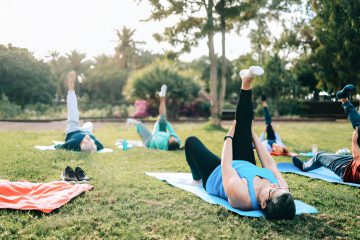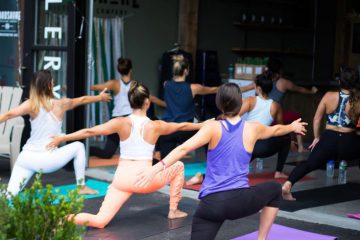A good night’s sleep is essential for overall health and well-being. However, many people struggle with falling and staying asleep. Incorporating yoga into your nightly routine can significantly enhance the quality of your sleep. Here, we explore effective yoga poses and exercises to help you achieve better sleep tonight.
The Importance of Yoga for Sleep
Yoga is renowned for its ability to reduce stress and promote relaxation. By focusing on breathing techniques and gentle movements, yoga can help calm the mind and prepare the body for rest. Regular practice of yoga has been shown to improve sleep quality, duration, and efficiency.
Best Yoga Poses for Sleep
1. Balasana (Child’s Pose)
Balasana, or Child’s Pose, is a restful posture that can help alleviate stress and fatigue. This pose gently stretches the hips, thighs, and ankles while promoting relaxation.
How to do it:
- Kneel on the floor with your big toes touching and knees spread apart.
- Sit back on your heels and extend your arms forward, lowering your torso between your thighs.
- Rest your forehead on the mat and breathe deeply, holding the pose for 1-3 minutes.
2. Supta Baddha Konasana (Reclining Bound Angle Pose)
Supta Baddha Konasana is excellent for opening the hips and promoting a sense of calm.
How to do it:
- Sit on the floor with your knees bent and feet together.
- Lie back, allowing your knees to fall open to the sides.
- Place your hands on your belly or extend them out to the sides.
- Close your eyes and breathe deeply, holding the pose for 5-10 minutes.
3. Viparita Karani (Legs-Up-the-Wall Pose)
This restorative pose helps to relax the legs and lower back, encouraging circulation and reducing stress.
How to do it:
- Sit with one side of your body against a wall.
- Lie back and swing your legs up the wall, adjusting your position so that your body forms an L-shape.
- Rest your arms by your sides and close your eyes.
- Breathe deeply and hold the pose for 5-15 minutes.
4. Savasana (Corpse Pose)
Savasana is the ultimate relaxation pose, often used at the end of a yoga session to integrate the practice.
How to do it:
- Lie flat on your back with your legs extended and arms relaxed at your sides, palms facing up.
- Close your eyes and take slow, deep breaths.
- Focus on relaxing each part of your body, from your toes to your head.
- Stay in this pose for 10-20 minutes.
Breathing Exercises for Better Sleep
1. Nadi Shodhana (Alternate Nostril Breathing)
This breathing technique helps to balance the nervous system and promote a sense of calm.
How to do it:
- Sit in a comfortable position with your spine straight.
- Close your right nostril with your right thumb and inhale deeply through your left nostril.
- Close your left nostril with your ring finger, release your right nostril, and exhale through the right nostril.
- Inhale through the right nostril, close it with your thumb, and exhale through the left nostril.
- Repeat for 5-10 minutes.
2. 4-7-8 Breathing Technique
This method helps to relax the body and mind, making it easier to fall asleep.
How to do it:
- Sit or lie down in a comfortable position.
- Inhale quietly through your nose for a count of 4.
- Hold your breath for a count of 7.
- Exhale completely through your mouth for a count of 8.
- Repeat the cycle 4-8 times.
Creating a Sleep-Conducive Environment
To maximize the benefits of your yoga practice, it’s important to create a bedroom environment that supports sleep.
1. Maintain a Cool, Dark, and Quiet Room
A cool, dark, and quiet room is ideal for sleep. Use blackout curtains, earplugs, or a white noise machine if necessary.
2. Establish a Nightly Routine
Going to bed and waking up at the same time each day helps regulate your internal clock. Include yoga and breathing exercises in your nightly routine.
3. Limit Screen Time Before Bed
The blue light emitted by screens can interfere with your sleep. Try to avoid electronic devices at least an hour before bedtime.
Incorporating yoga and specific breathing exercises into your nightly routine can significantly improve your sleep quality.


